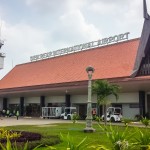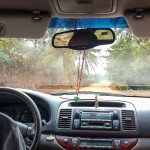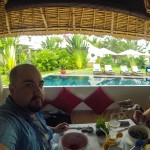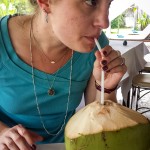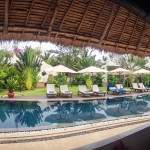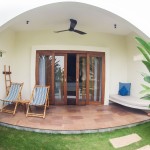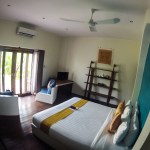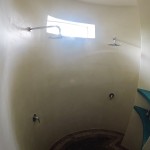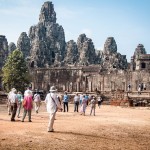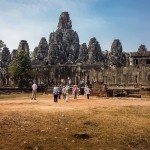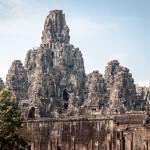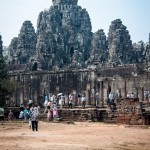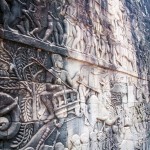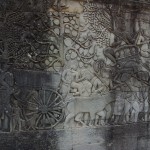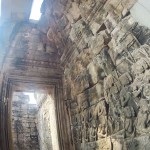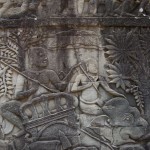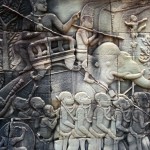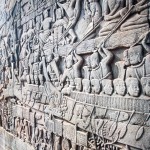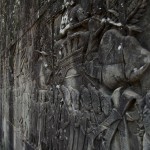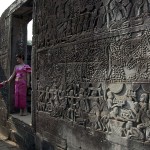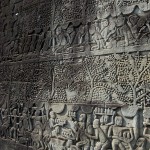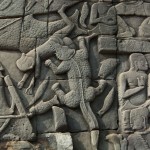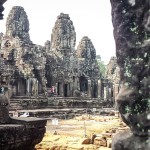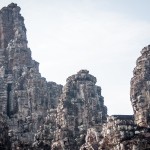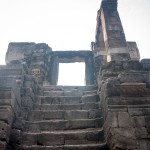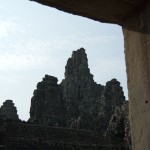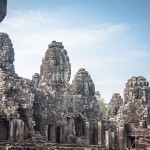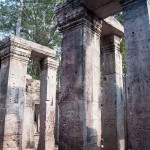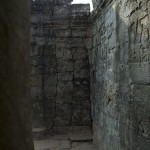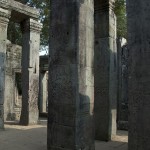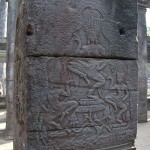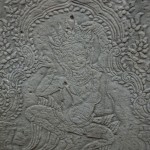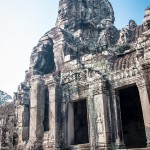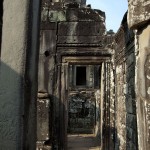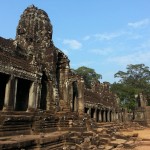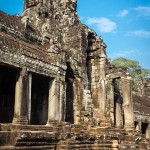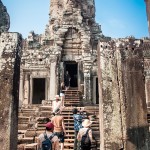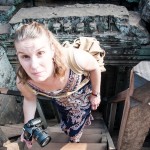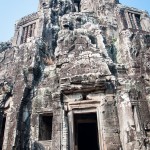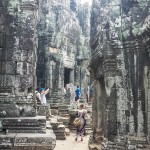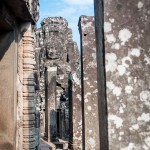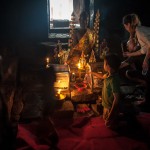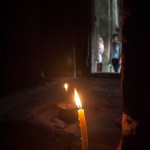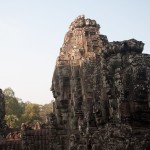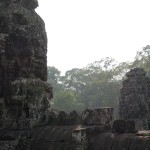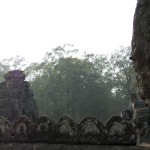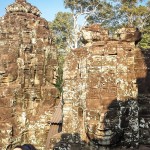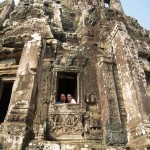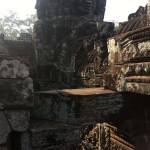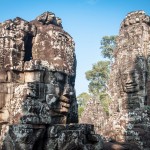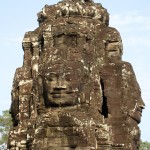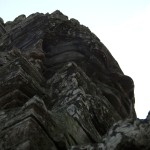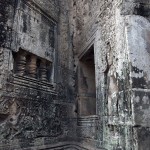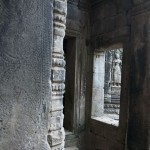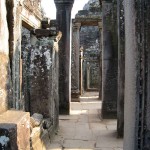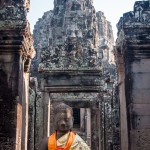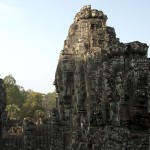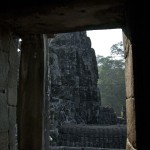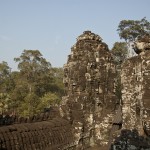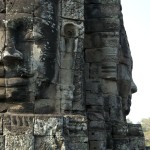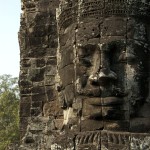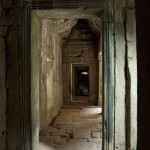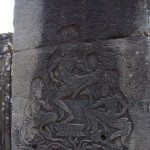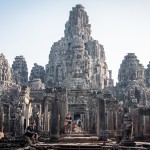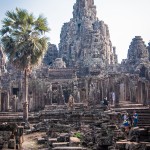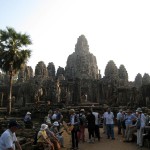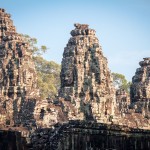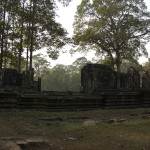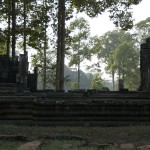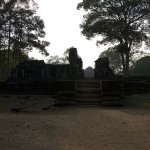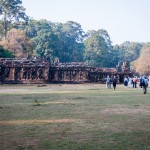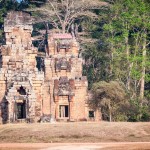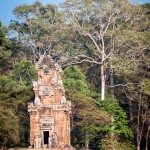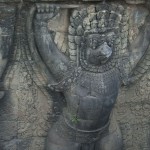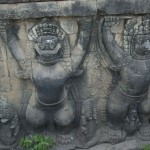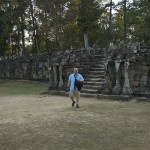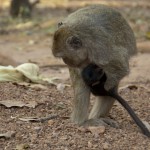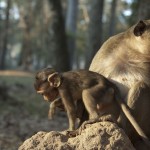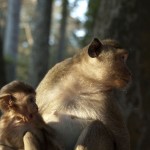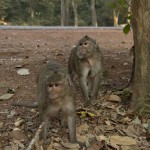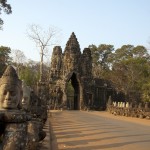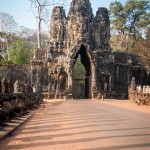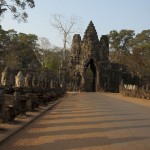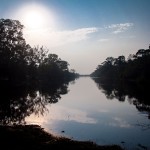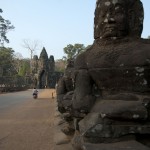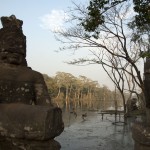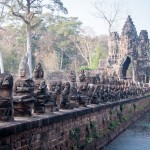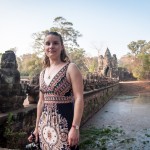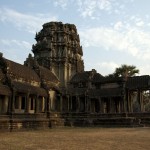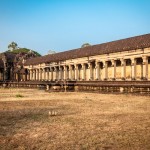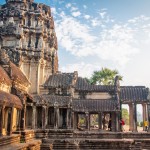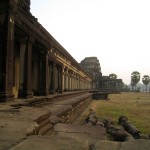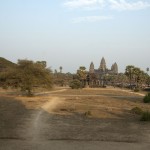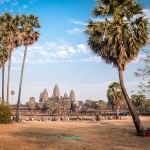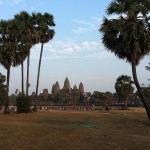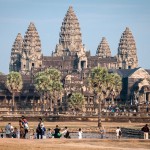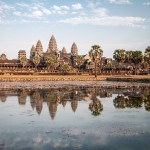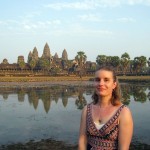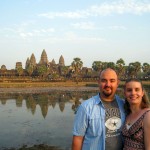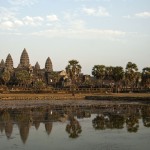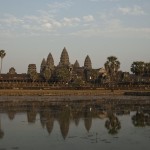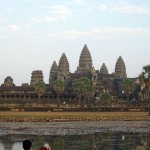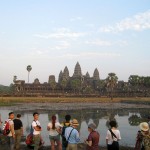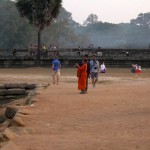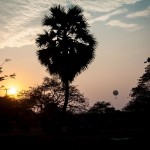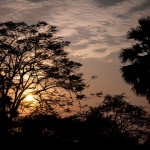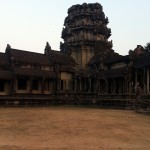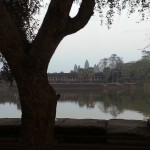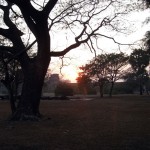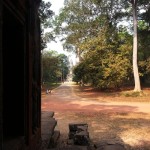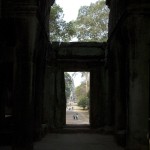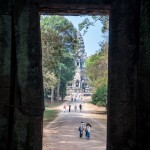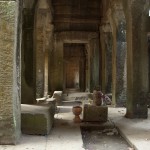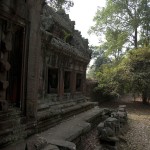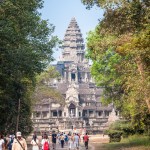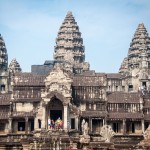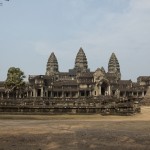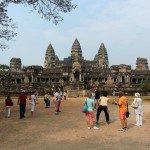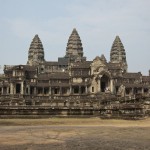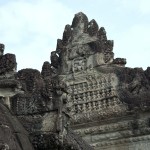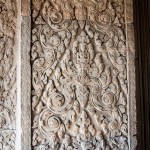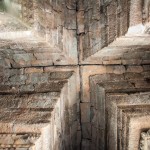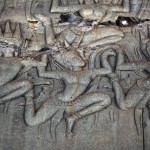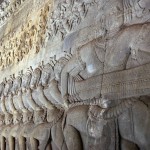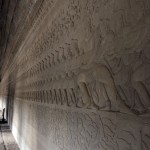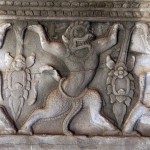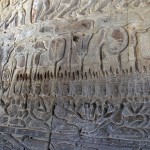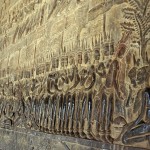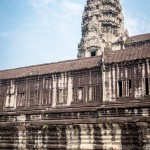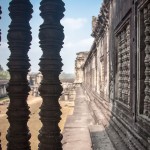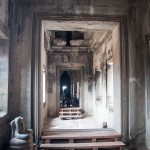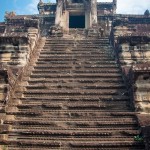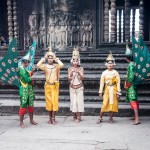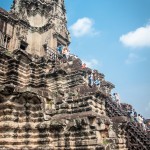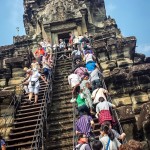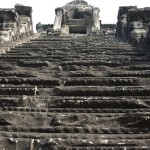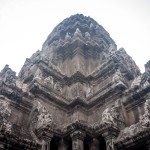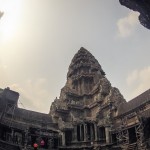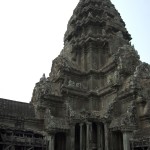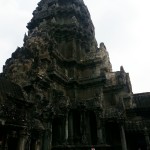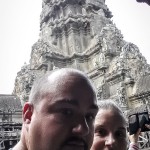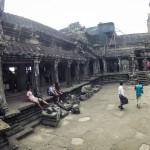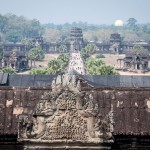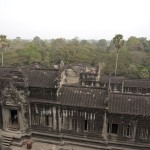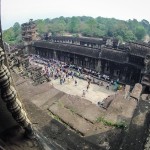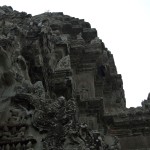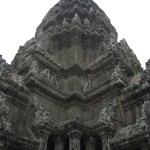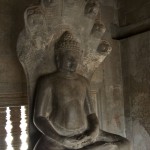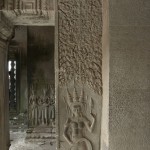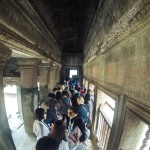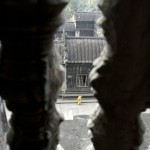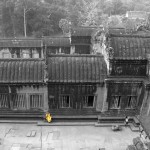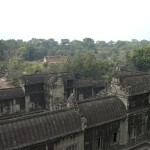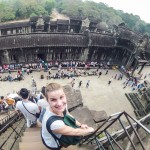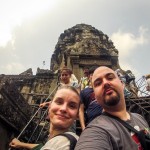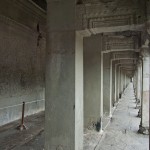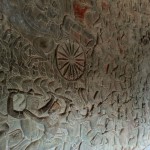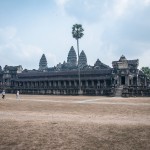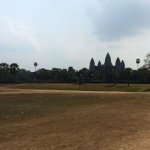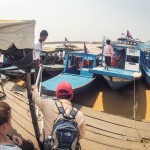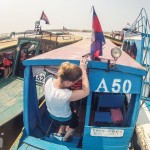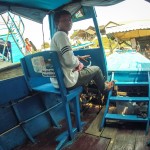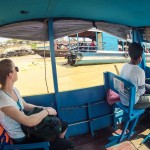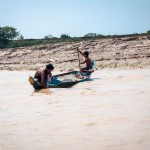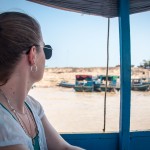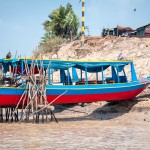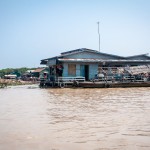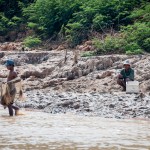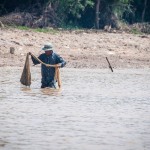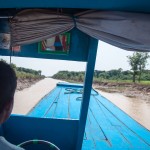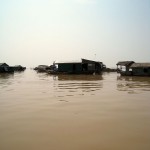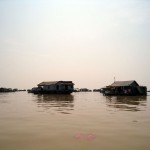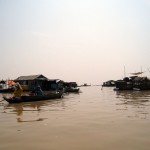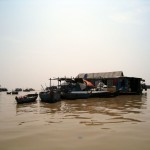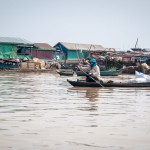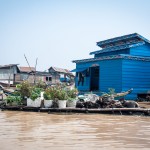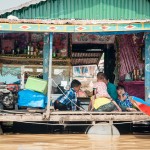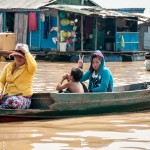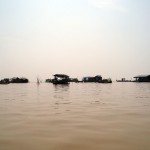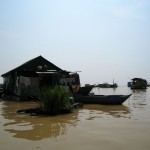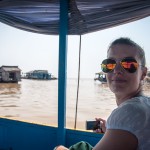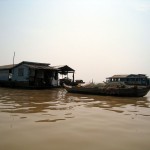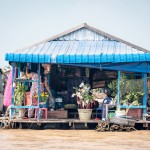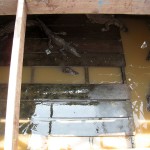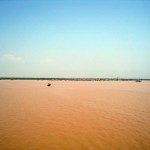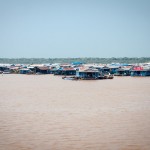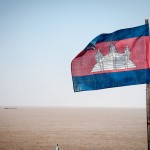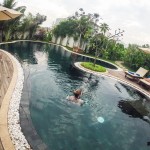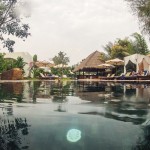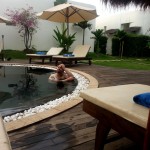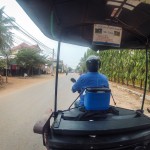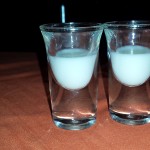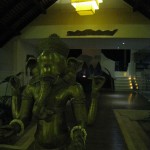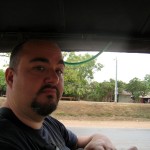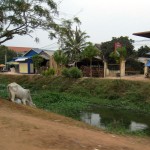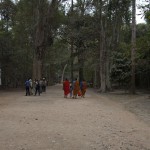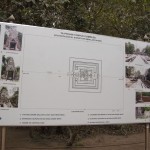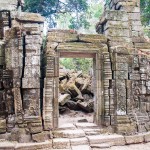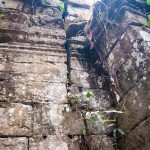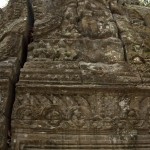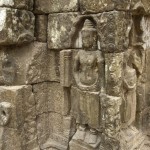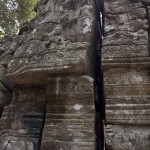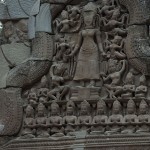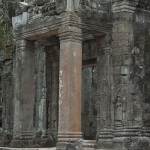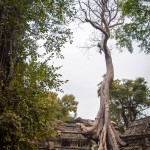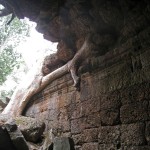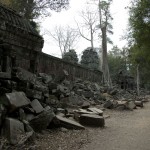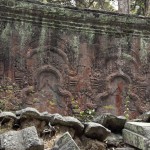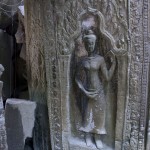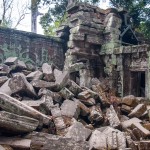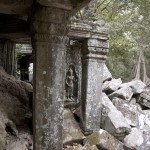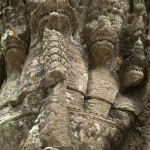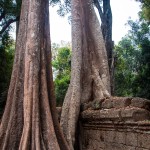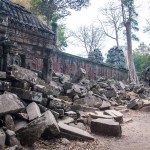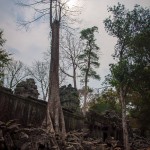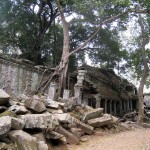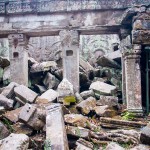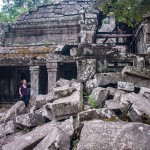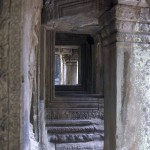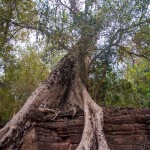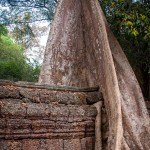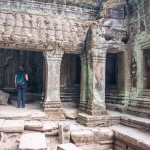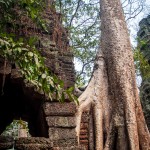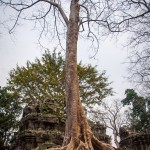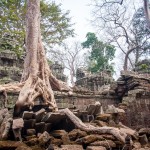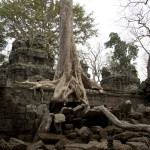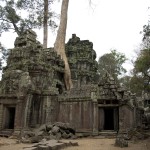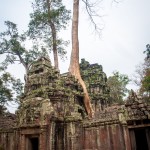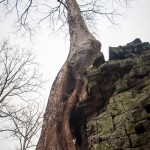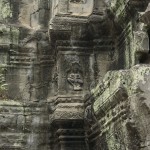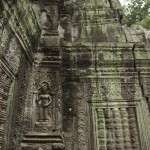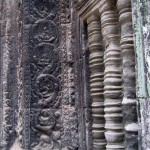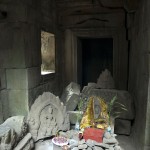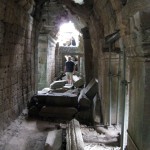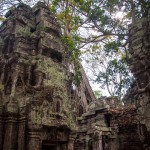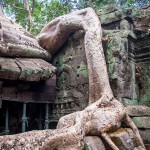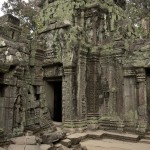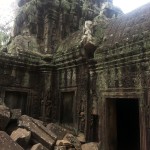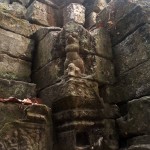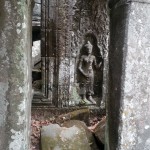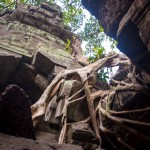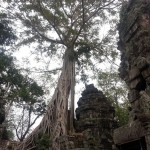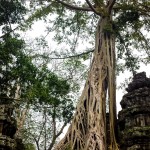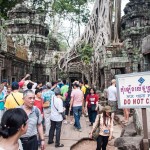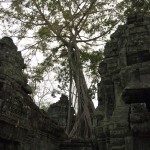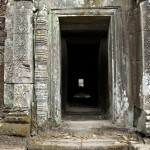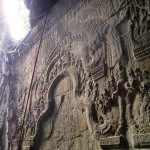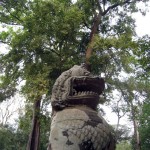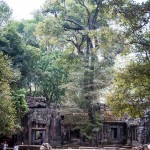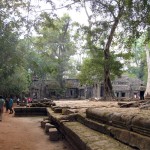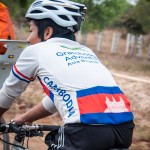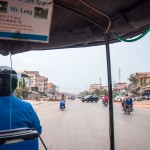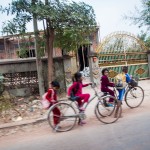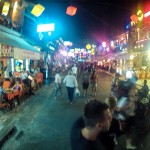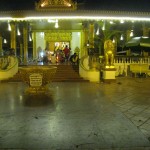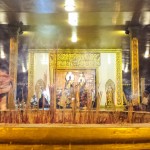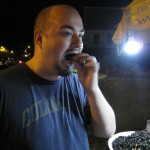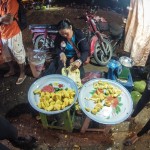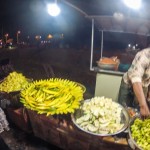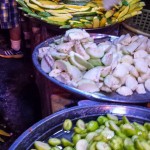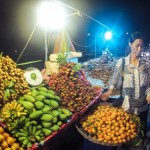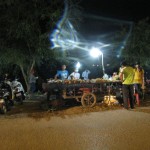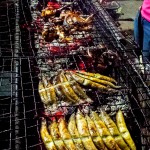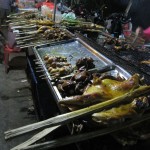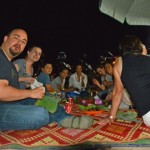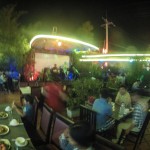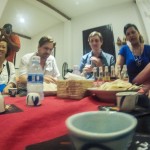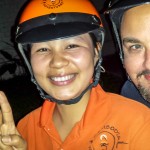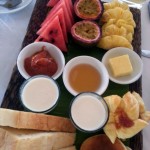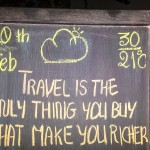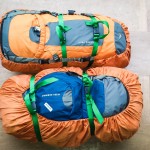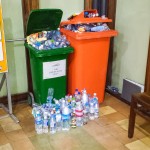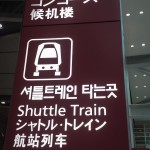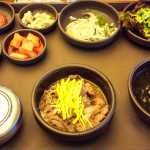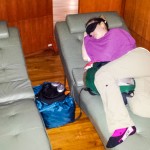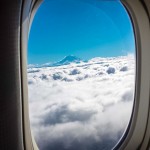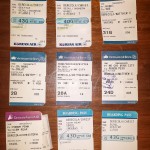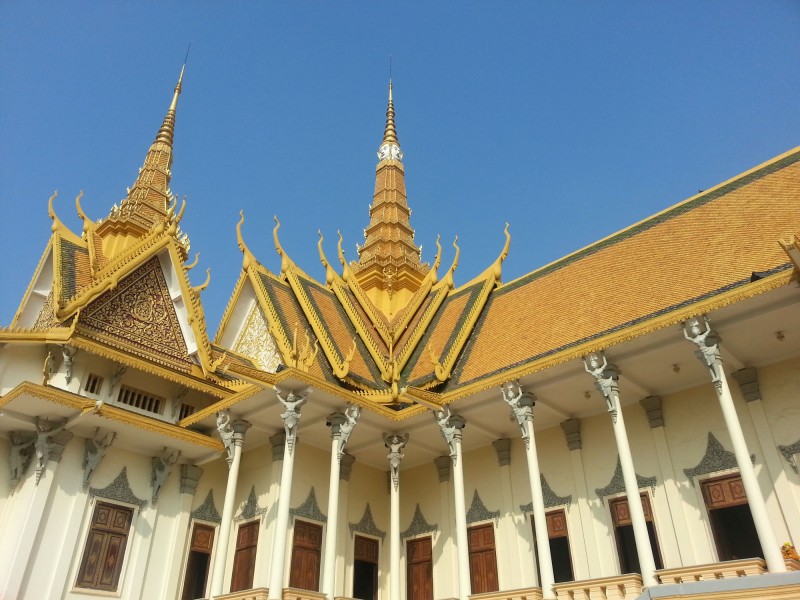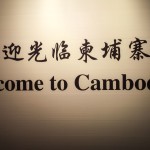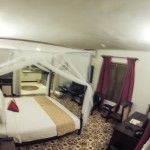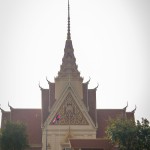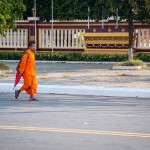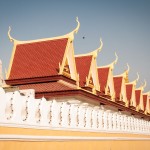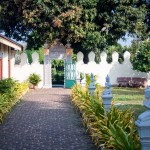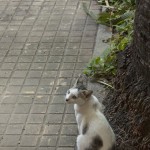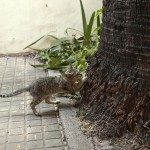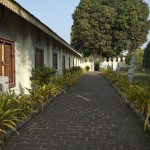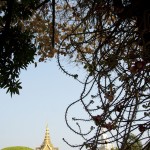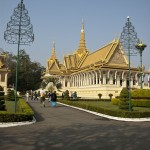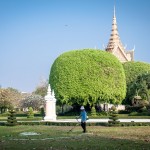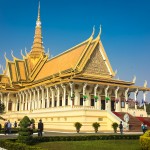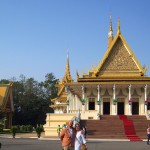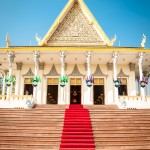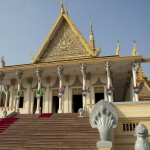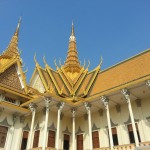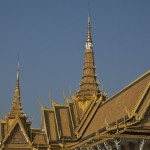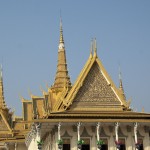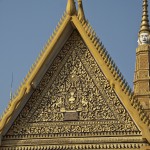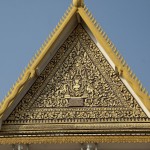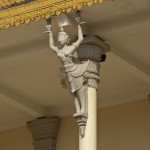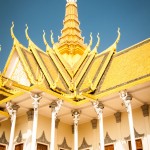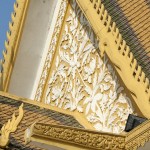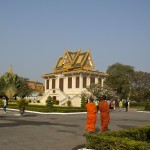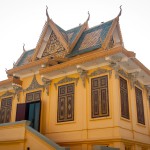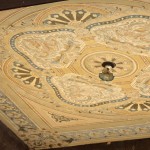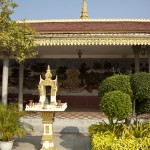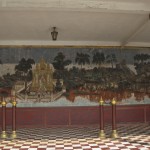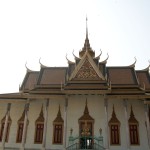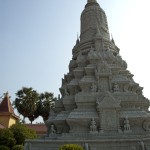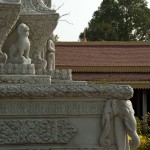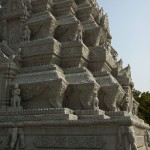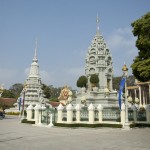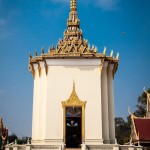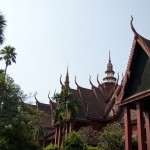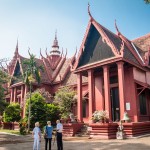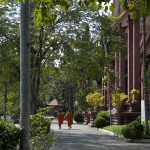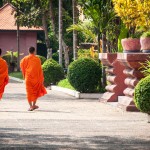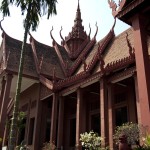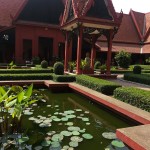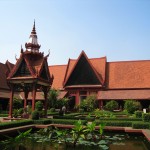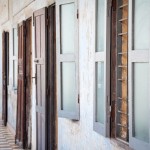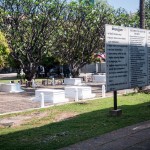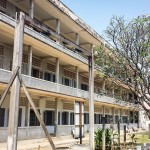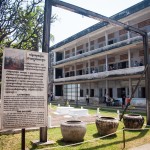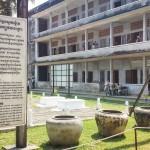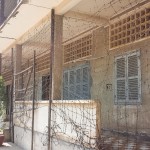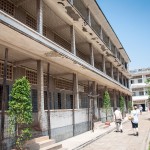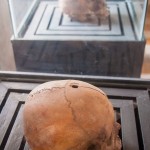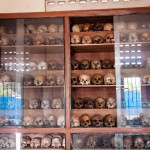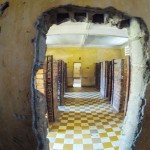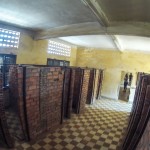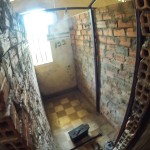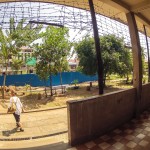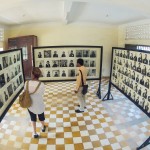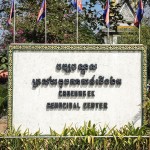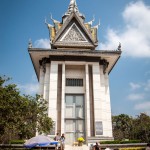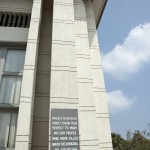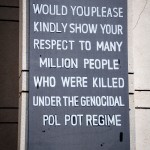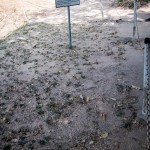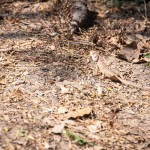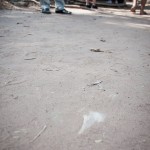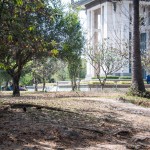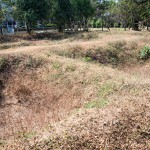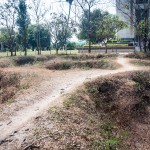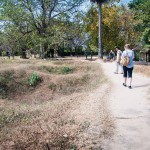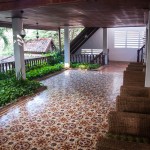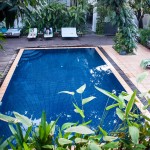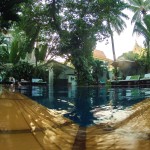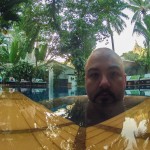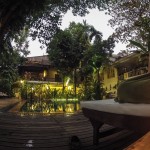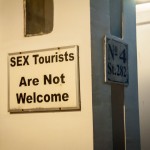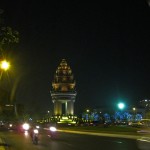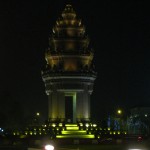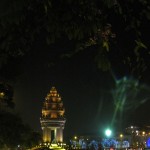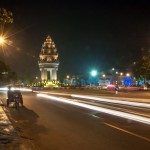Vietnam & Cambodia Trip – Stop Nine – Siem Reap, Cambodia
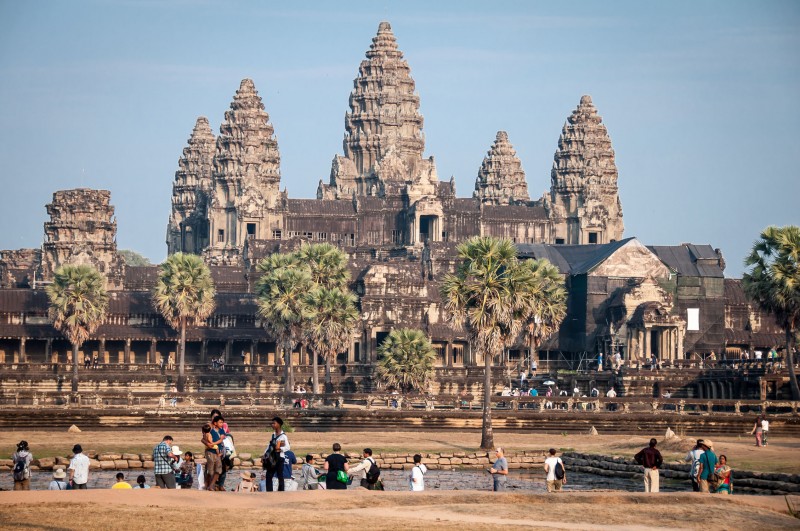 On the 17th we had our last early morning flight of the trip. Unfortunately, once we were on the plane there was a delay. We sat for two hours on the plane with no air circulation waiting to fly to Siem Reap. It was completely unpleasant to say the least, especially since the flight itself was less than an hour.
On the 17th we had our last early morning flight of the trip. Unfortunately, once we were on the plane there was a delay. We sat for two hours on the plane with no air circulation waiting to fly to Siem Reap. It was completely unpleasant to say the least, especially since the flight itself was less than an hour.
We drove from the airport to the hotel along very dusty, red dirt roads. We appeared to be traveling away from any sort of modern hotel but our car finally pulled up to a gated resort. Since this was our last stop on the trip, we picked a higher end hotel. Once inside the gated area, it was as if we had stepped into another lush green world. We went from the open air lobby to a open air restaurant near the lap pool while waiting for our room to be ready.
After lunch and a shower, our guide took us to get our Angkor Pass; the entry ticket we would need to enter all the temples. We then passed by Angkor Wat and started exploring at the larger Angkor Thom. We entered the complex at the South gate and drove through the jungle to Bayon, the main temple, at the center. Built in the 12th or 13th century, the temple is known for its face-towers and long narrative bas-reliefs. Currently there are 37 towers, each with faces pointing in the cardinal directions. Looking at the photographs now, often the faced disappear into the stone whereas in person they felt more defined.
Walking around, our guide pointed out all sorts of interesting images in the bas-relief. Many of the segments show battles or armies marching, but other segments illustrate a range of daily activities. It is hard to imagine what these looked like when they were first carved given that much of it is still very clear and readable. Exiting Bayon, we walked further into Angkor Thom to the Terrace of the Elephants.
The Terrace of the Elephants is a platform built for King Jayavarman VII to review his army. It is named for the carved Elephants which decorate it. There were other structures and gates at one point in time, however most are now in ruins. Unfortunately for us, it was not always easy to understand everything the tour guide was telling us. He had a lot of information, but we found that he did not seem to use punctuation so all the sentences ran together. I felt that it took a lot of concentration to understand when he was explaining the historical elements, so sadly I don’t remember much of the interesting details he shared.
On our way out of Angkor Thom we stopped to see the monkeys. I honestly was a little scared of them and almost elected not to stop. The once in a lifetime element of it took over and we were able to get very close. I, in fact, got a little too close for one of the mama monkeys who was not pleased with my proximity and chased me away.
Our final stop of the evening was Angkor Wat as the sun was setting. The temple complex was crowded with tourists like us in search of a beautiful sunset over the temple. We stood by a pond as the sun set, watching the reflection of the temple in the water. The colors were not too impressive that evening, so before it really got dark we returned to the hotel for the evening.
Chris’ Comments: Of all the things in the Angor Wat complex, I was most interested in seeing the place where the trees had grown for hundreds of years in the ruins. I have to admit that I was surprised when I realized that, what was called, Angkor Thom wasn’t part of the same main complex that we’ve all seen on TV and travel magazines. I was also surprised at the sheer number of tourists we dealt with at all the sights. I’m not sure what I expected, but there were A LOT of people. I absolutely recommend going because the sheer scale and *detail* of it all is something you will never get in pictures, just understand you will have to really search for that moment of quiet reflection you may be looking for. I’ll be back when I’m a movie star that can clear it for a set or am rich enough to rent some private time from the Cambodian government. Random fun fact: The Cambodian Royal Family liked one of my photos on Instagram. I’m well on my way!
Angkor Thom
Elephant Terrace
Monkeys
Angkor Thom South Gate and Bridge
Angkor Wat at Sunset
The next morning we returned to Angkor Wat, entering the complex through the East. We had been given the option to arrive for sunrise, but elected to skip another early morning. Unlike the West entrance, the East entrance is only a dirt embankment. According to our guide, this entrance was built for access to the temple during the restoration effort. After looking at the bas-reliefs in the outer galleries, we made our way into the center of the temple. There was a line to climb some unbelievably steep stairs to the base of the main tower and I had to make sure that my shoulders were covered before we could go up, but I was glad that the area had been reopened to visitors.
Going up the stairs was scary, but going down was worse. I was so glad that there were handrails and temporary stairs installed to make it easier. At this point we exited out of the complex through the West Gate and went to have lunch. All over the sites were young children selling books and postcards. They have worked out responses to every reason why a person would not buy from them. When Chris told one girl that he did not want to carry the book she responded that she would carry it for him. She offered to carry it all the way back to Seattle if he got her a VISA.
After lunch we drove out to Tonle Sap, a large fresh water river/lake. February is the end of the dry season, meaning the river was pretty low and muddy when we went. A boat took us out past men fishing on the banks to a larger floating village. Unlike in the Mekong Delta, it was not possible to see land while moving through the village. We stopped at one tourist market on the lake. They had a cage with crocodiles and a young girl walking around with a large snake. We climbed up to the roof and looked out over the village. In total it was kind of depressing.
After the tour we returned to the hotel and cooled of by the pool before taking a Tuk Tuk to dinner at George’s.
We had one day left on our Angkor pass so we took a Tuk Tuk from the hotel out to Ta Prohm temple. The temple is located East of the Angkor Thom and is much smaller. Unlike the other two temples we visited, the preservationists have not removed most of the trees and plants which have grown up through the structures. They have put walkways and closed off areas to tourists, but the jungle has started to take the area back. Since we did not have a guide we turned down whichever path or hall had the least amount of tourists. It was remarkable to see what nature can do and to think about what the other sites would look like if they had been left alone.
After about an hour of walking around in the heat and crowds we had our Tuk Tuk driver take us to get something to eat, then back to the hotel. In the evening we had our second Vespa tour. The tour in HCMC had been so much fun that we signed up with the same company to tour Siem Reap at night.
The tour was only eight of us: an English couple that were uncomfortable with riding on Vespas who took a Tuk Tuk, an American family of four that were now living in Hong Kong, and us. It was one of those small world moments when they said that they had lived in Seattle; in fact they still owned their house southeast of the city. After meeting at a bar in the tourist area of the city, Pub Street, we walked to where stalls selling spices are normally set up. Unfortunately due to the holiday, many stalls were closed.
From there we rode around the city on the Vespas, stopping at the Shrine to Preah Ang Chek and Preah Ang Chorm. The shrine was busy with people worshiping and it was a nice change to see a site busy with non-tourists. From there the tour group went to the night street market along the highway. We walked in the crowds of locals buying food and sitting on blankets eating. The first stall we stopped at was selling bugs. There were large trays piled with different kinds of prepared insects. I have always said that I would try crickets or other insects if they were cooked and here was my chance. I tried one type of cricket, which was very crunchy and not really remarkable. Chris sampled all the different offerings including water beetles and a larva of some sort.
The next stall we stopped at had jackfruit; next to it was a stall with sour sugar fruit, which was very interesting. It was a bunch of large trays of cut fruit covered in a sour sugar. Sort of like eating sour patch kids candy but also slightly spicy. Further down the road we stopped at a fruit stall and the tour guide named all the different type of fruit. Most of the fruit I had seen before, like tamarind, but never had it so fresh. After getting grilled corn at one cart we all sat down on blankets on the river bank. The stall in front sold grilled meat and we sampled fish, chicken and pork stuffed frog. It was all great to experience something authentic and simple.
When we had eaten way too much, the tour continued to a restaurant with live music and few other Cambodian dishes to try. Then on the way back to the hotel we stopped at an infusion “store” to sample the spirits and have some Cambodian sweets. We did not sample the infusions but were given small bottles to bring home.
Angkor Wat
Tonle Sap
Evening Adventures
Ta Prohm
Vespa Tour
For our last day in Cambodia, the plan was to sleep in and relax until our late flight home. Unfortunately, someone in the neighborhood was celebrating the new year by playing chanting over loud speakers very early in the morning. The music and chanting did not stop until three in the afternoon. Meanwhile there was no where at the hotel you could escape the sound. We both had massages and when it was finally quiet, took a nap before checking out of the hotel in the evening.
Our flight to South Korea was uneventful but it was about six in the morning when we arrived. We had a 12 hour layover and wanted to explore the city, but were too exhausted to think straight… much less travel around a new city. Instead to slept. We rented a hotel room in the airport for six hours, the maximum the hotel allows, and were asleep as soon as our heads hit the pillow. It was great because we were able to sleep and shower before wandering around the airport. While in search of Korean food, we ended up in the wrong area of the airport and were unable to get back on our own. We had to be escorted by security back to the correct area. I felt better that at least one other English speaking visitor (a young Canadian woman) had done the same thing and was being lead back with us. After some more napping in the terminal, we were on our last flight and heading home to Seattle.
Note to our readers:
If you are interested many of the photographs are captioned, just select the individual images to open them in a new window. Also, we were surprised how large the country was for a small country. I have put together a Travel Map with the places we visited to give an idea of how we managed to cover a good portion of the country during our trip.

